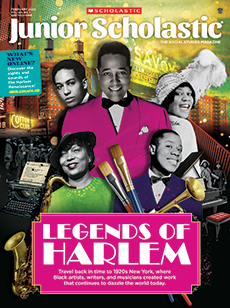When John Mills was in school, he thought history was super boring: just stories about old-fashioned people who wore strange clothes and had funny hairstyles.
“I had zero interest,” he says.
But that changed years later when Mills started learning about his family’s past. Suddenly, history wasn’t just about strangers—it was about him.
He learned that his grandfather Milon Mills fled the Southern United States during the Great Migration (1910-1970), a time when millions of Black Americans moved north and west to build better lives. His great-grandmother Eliza Punch Mills died in the 1918 flu pandemic. And his great-great-great-grandfather Sam Kyle gained freedom from enslavement on Juneteenth, the day in 1865 when the last enslaved people in Texas learned they had been freed.
“All of a sudden, I could put myself in their shoes,” he says.
Today Mills spends his spare time working as a genealogist—someone who researches people’s ancestors and history. He focuses on African American families because their histories can be the hardest to find. Many historical documents about Black ancestors in the U.S. are missing or incomplete because of slavery. For example, records of enslaved people from the early 1800s often list only first names—or no names at all—because those people were considered property, not individuals.

